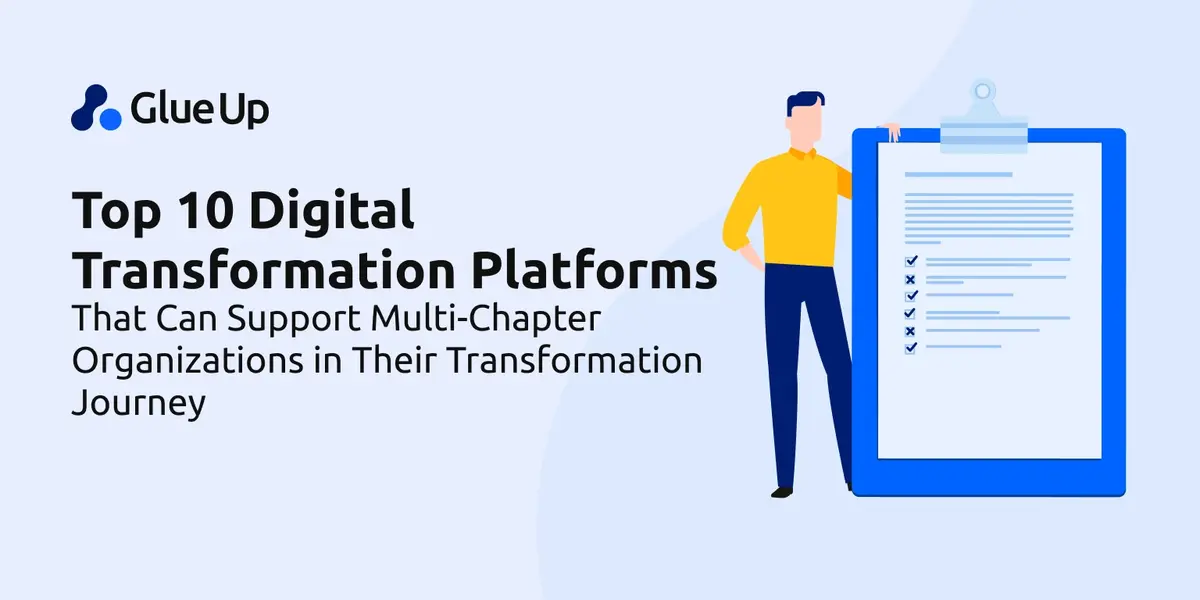
If you are asking yourself: What is the best way to drive successful digitalization? The answer is: By choosing the right digital transformation platform.
A digital transformation platform is a set of technological streams that enable businesses to improve their competitive position by leveraging innovation and smart solutions. They combine big data, analytics, AI, cloud, and machine learning to bring the digital revolution to organizations.
In this article, we will detail ten of the best digitalization platforms available for multi-chapter organizations. We will also cover:
- The types of digital transformation platforms
- Ideal characteristics for choosing the right platform
And some FAQs to assist you in finding the best resources.
So let’s get started.
Quick Reads
- What is a Digital Transformation Platform?
- Various Types of Digital Transformation Platforms
- The Ideal Characteristics Chapter Leaders Should Look For in a Digital Transformation Platform
- Top 10 Digital Transformation Platforms That Chapter Leaders Should Consider
- FAQs
What is a Digital Transformation Platform?
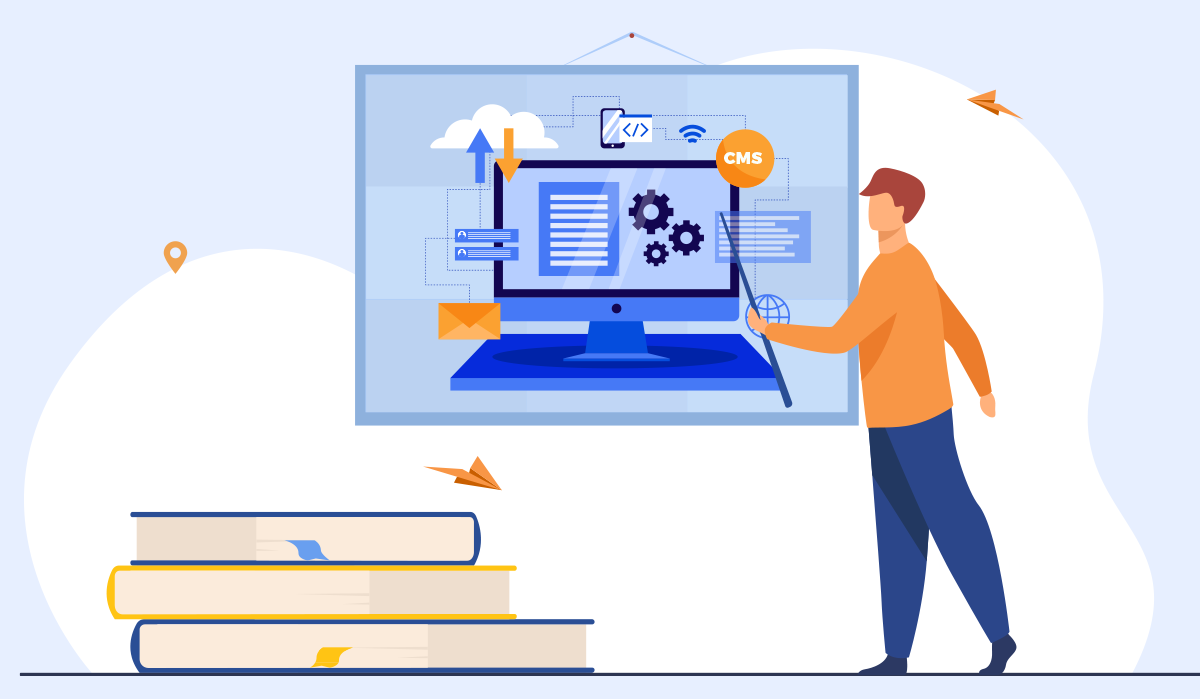
A digital transformation platform refers to a centralized system that assists businesses in achieving digitalization and improving how organizations deliver value to their customers and remain competitive.
It identifies gaps in current operations and uses future technologies to define new value propositions.
The primary goal of a digitalization platform is to improve productivity, enhance business operations, and increase revenues by integrating the latest technologies.
It can be a single application or a combination of tools that aims to maximize the impact of the technology to achieve business goals.
Various Types of Digital Transformation Platforms
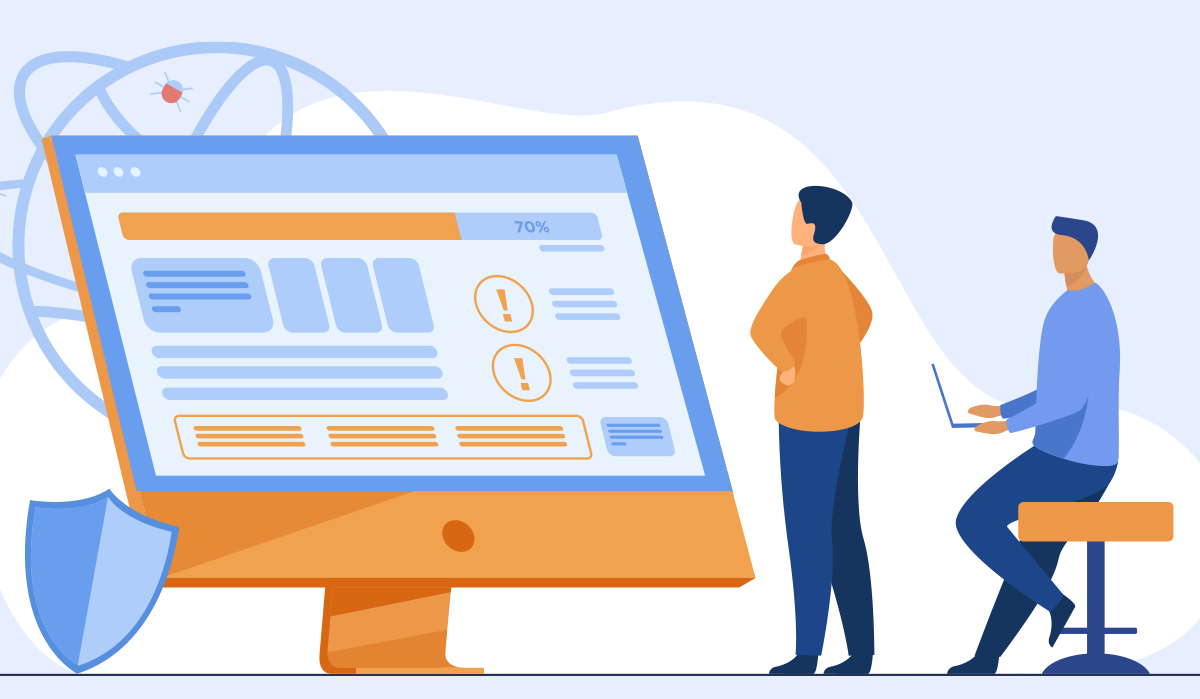
Digital transformation platforms are expected to gain a global value of US$10 trillion over the next decade. These modules will accelerate disruptive innovation and create revolutionary market solutions.
Each organization, however, may not require all digital platforms. While some apply to one type of business, others are essential to others. To help you determine what type of platform best fits your needs, let's consider its four types
Aggregation Platforms
As the name indicates, aggregation platforms collect several resources in real-time and connect users with the best ones. They are mainly used to execute and automate tasks such as getting a response from the customer or making a sale.
An aggregation platform operates on a spoke–hub distribution paradigm where the platform owner acts as a middleman in B2C relationships. The best examples include marketplaces like Etsy and Amazon.
Social Platforms
Social digitalization platforms aim to engage users with similar interests. Unlike aggregation platforms, they do not operate on a hub and spoke distribution paradigm i.e. the owner is not involved in network building.
Social platforms are not focused on completing a task or making a transaction. However, they can be utilized to lead prospects to the aggregation platforms to achieve a goal such as signing up for a membership, booking a demo, or making a purchase.
Facebook, Twitter, and LinkedIn are some of the leading examples of social digitalization platforms.
Learning Platforms
Learning platforms enhance learning by providing reliable resources to the users and connecting them with other learners. They can share their insights on a resource, rate a project, or earn badges together.
These platforms are important for chapter leaders who aim to drive innovations as well as empower their employees by upskilling.
Mobilization Platforms
Mobilization platforms connect people to achieve larger goals. This is accomplished by uniting and enabling people with common interests and grounds to achieve their mission by bringing them on one page.
They focus on building long-term collaborations instead of short-term ties. Several industries including financial services, supply chain, and automotive companies are incorporating digitalization using mobilization platforms.
The Ideal Characteristics Chapter Leaders Should Look For in a Digital Transformation Platform
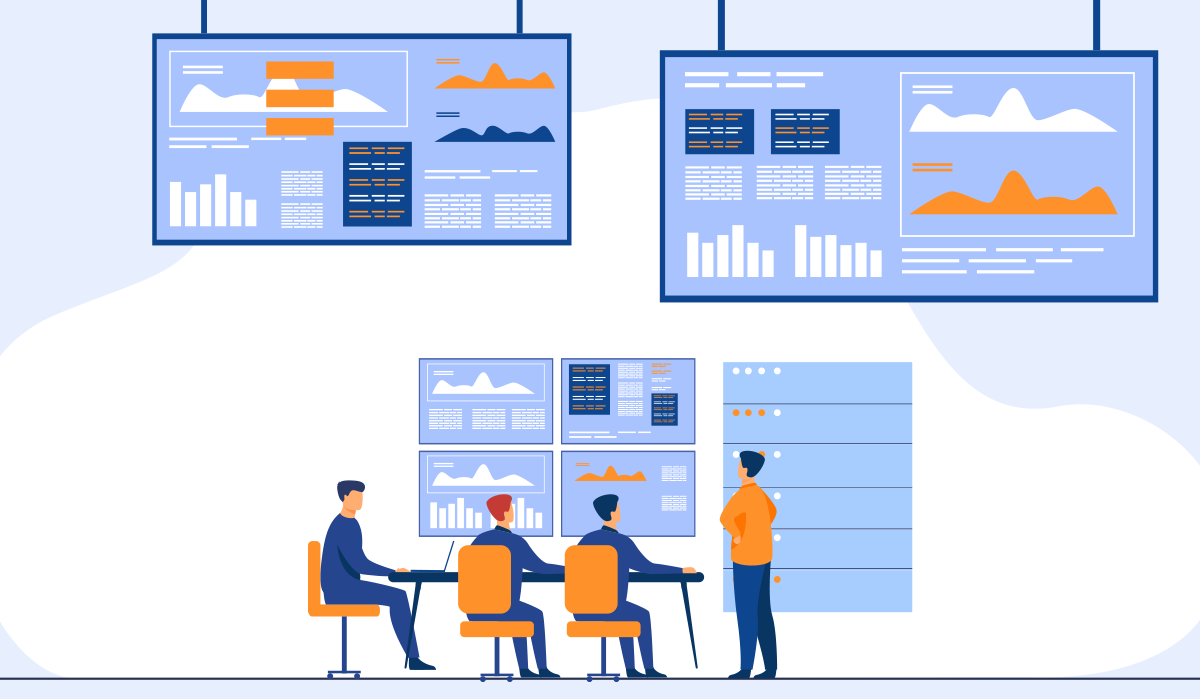
An ideal computing platform has the features your business needs. However, it must possess the following characteristics to ensure its effectiveness.
Low Code
Low-code is the latest software development approach with little or no-coding needs. It features a drag-and-drop model that eliminates the manual coding in complex programming languages, resulting in faster delivery of applications.
Low-code allows users without sophisticated programming skills to create websites, emails, and applications of different capacities, making it a primary requirement for digital transformation platforms.
Easy to Deploy
The process of digital organization transformation includes a lot of testing, which requires an easy deployment platform.
Your digitalization platform should be able to consistently build and release at scale, as well as integrate seamlessly with your other software. It should also allow your innovation teams to create and update platforms quickly and easily.
Cloud-Based
Digitalization is almost impossible without cloud-based platforms. Cloud computing enables digital transformation by providing an on-demand, service-based model that automates several processes to create a seamless operations system.
It also allows chapter leaders to build an infrastructure that fits the evolving business needs without wasting their resources on incompetent IT staff and procedures.
Agile Development
If you do not have a platform that facilitates agile software development, your digital transformation approaches will quickly become outdated.
Agile software development is based on the idea of continuous improvement through feedback and innovation. It aims to develop solutions through collaborative team efforts resulting in high-quality solutions, faster implementation, and predictable outcomes.
Since innovation and experimentation are the core elements of the digitalization journey, a transformation is not possible without an agile platform.
Mobile First
As more than half of the world's population is moving from desktop to mobile devices, it has become increasingly important for digital business platforms to focus on mobile. In fact, according to the latest statistics, 68% of website visits originate from mobile devices globally.
Platforms that adopt a mobile-first approach focus on designing user interfaces that are optimized for smartphones. It also allows developers to scale up, moving from the smallest to the largest screen.
Top 10 Digital Transformation Platforms That Chapter Leaders Should Consider
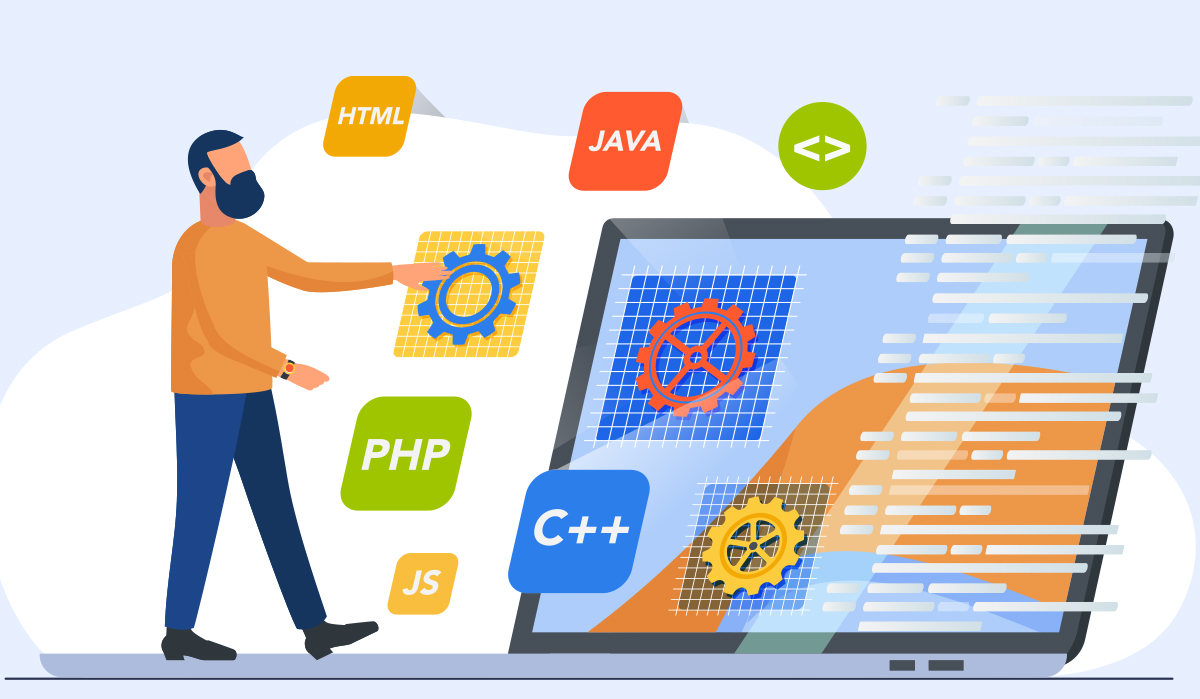
The best digital transformation platforms help you to achieve steadfast results. They can spot and eliminate the inefficiencies in your manual procedures and provide a continuous roadmap to accelerate digitalization.
To pick out the right digital transformation platform for your multi-tier organization, let's look at some of the most popular ones.
Glue Up
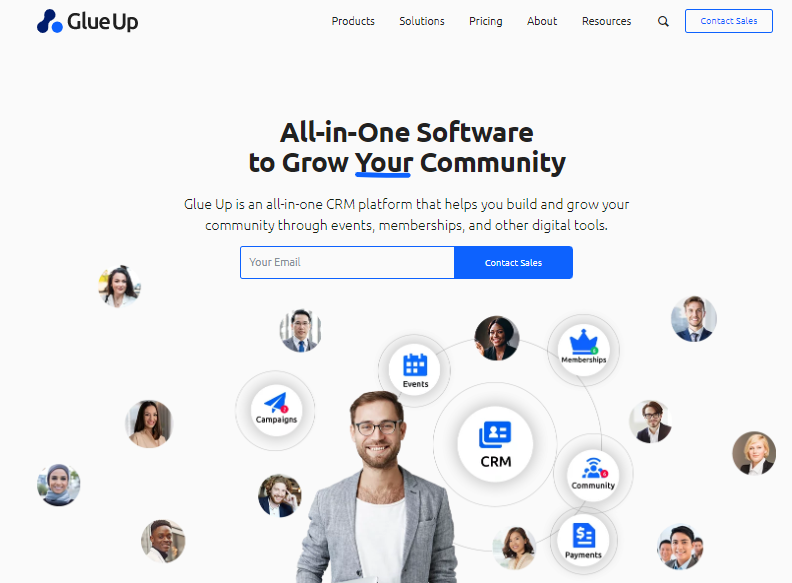
Glue Up is the leading digital transformation platform that enables and enriches relationships among professional communities. Its all-in-one engagement management CRM houses several modules that automate and synchronize complex tasks such as members’ communities, organizing and managing events, email campaigns, and managing invoices.
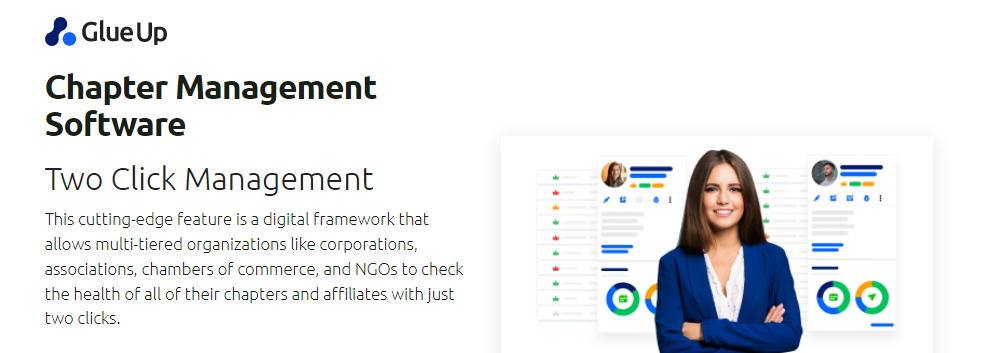
Glue Up’s chapter management software is the ultimate need of every chapter-based organization looking forward to implementing digitalization. This two-click management tool allows multi-tier businesses to check the health of all their branches, share information, streamline workflows and monitor their operations.
It helps chapters to affiliate with the headquarters easily using the unified dashboard. Thus it increases coordination, productivity, and transparency among all the branches. The system allows chapters to be self-reliant while providing a bird's eye view of their activities to the headquarters.
The best part about Glue Up’s digital transformation platform is that it has all the characteristics of an ideal digital transformation platform mentioned above. It is cloud-native, low code, mobile-first, easy to deploy, and supports agile development.
E2Open
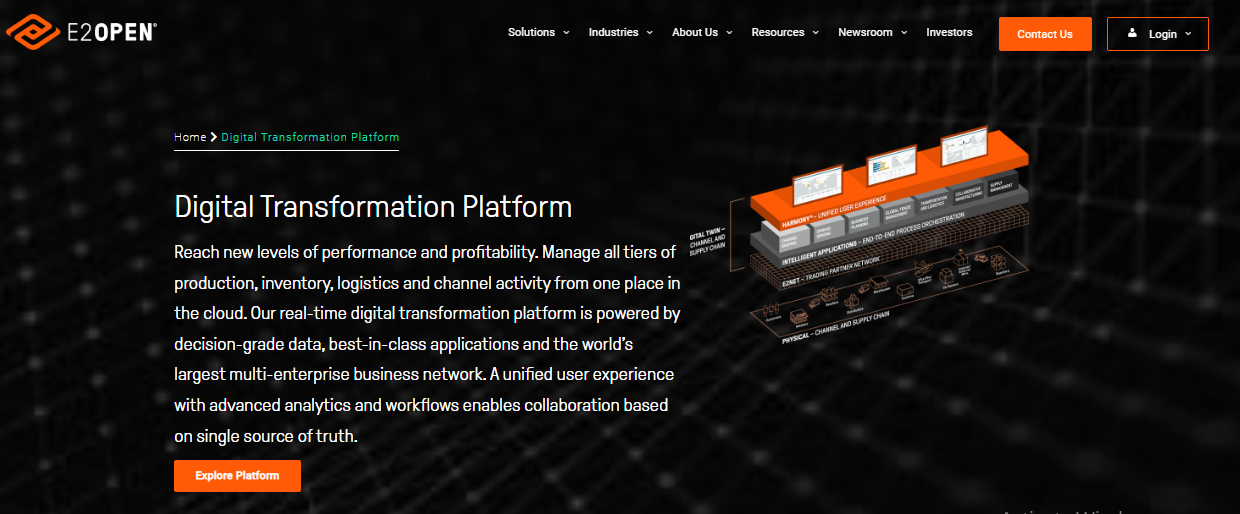
E2Open is another leading digitalization platform for chapters belonging to production and distribution companies. Its cloud-native system orchestrates all the supply chain activities starting from production to inventory management and logistics.
It features AI-driven applications that provide a unified platform for all the chapters to manage and maintain their workflows. The interface can be accessed by all the participants added to the platforms, resulting in greater transparency, access, and coordination.
Furthermore, its unified CRM collects and stores real-time data from industry leaders to compare their performances against the set benchmark. This enables them to eliminate barriers and improvise on the current processes to stay competitive.
MuleSoft
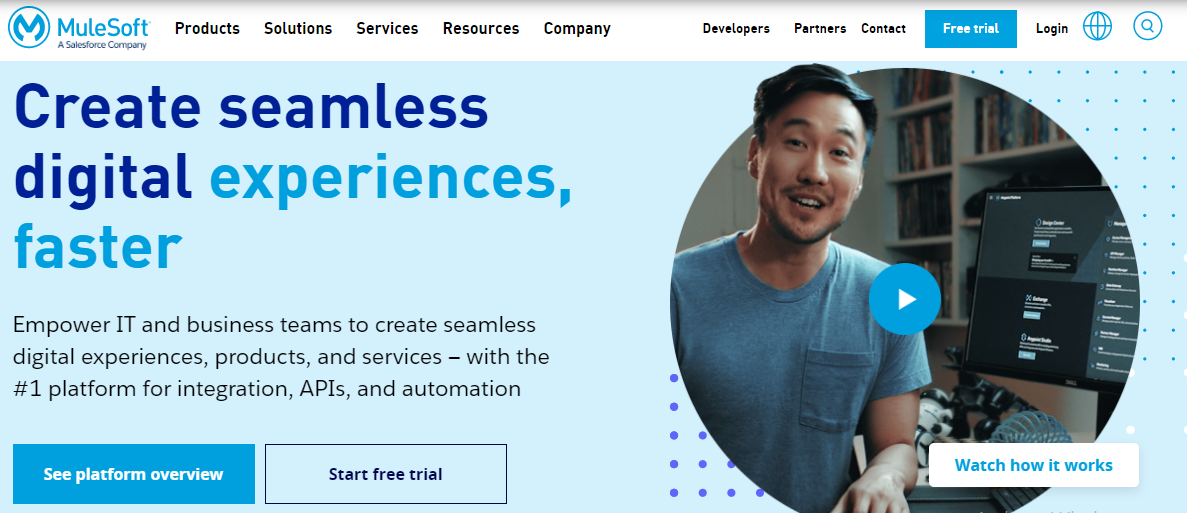
MuleSoft is another cloud-native module that helps IT businesses create and connect digital products effectively. It is a scalable network of applications, databases, and services, all linked by APIs.
The unified platform integrates functionalities into the database so they can be added to the applications using smart integrations. You can create or integrate new services that are stored in the library of capabilities. From there, they are used to build new products or modify existing ones without disrupting the network.
In addition, it provides chapter leaders with oversight and governance of every functionality to add them from one project to the next.
Appian
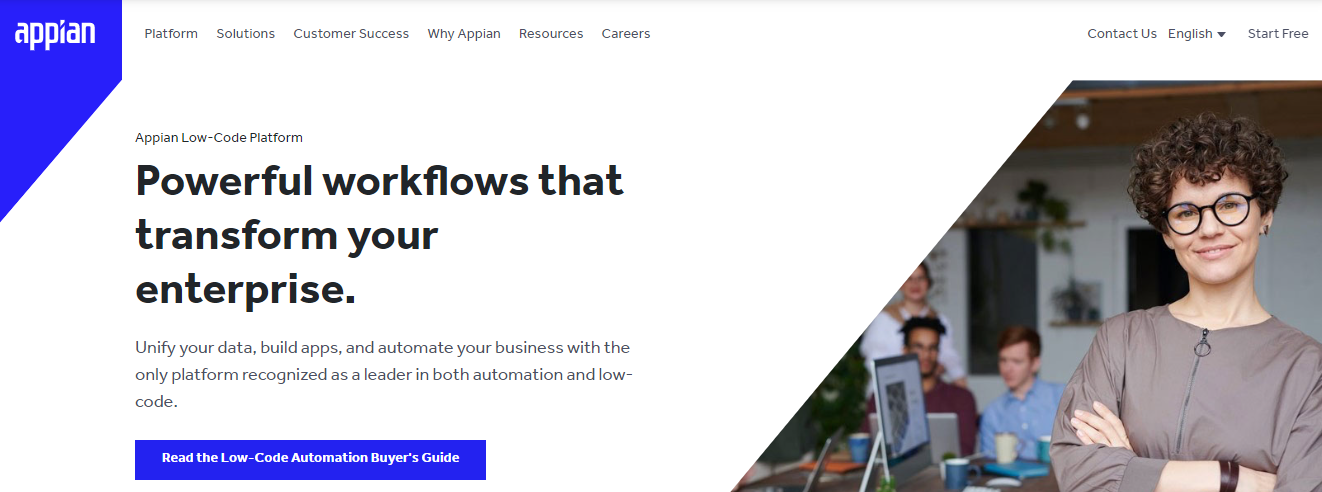
Appian platform for digital transformation unifies data and processes to promote operational efficiency, data-driven decision-making, and scalable innovation.
It handles all the departments of the multi-chapter organizations including production, supply chain, field service, assets management, revenue recognition, and human resource management.
With Appian, organizations can integrate emerging technology into unique applications. It adds multi-experience solutions to existing operations and improves already installed digital processes throughout the entire value chain. As a result, chapter leaders can experience streamlined workflows, unified systems, and increased transparency across all channels.
Mendix
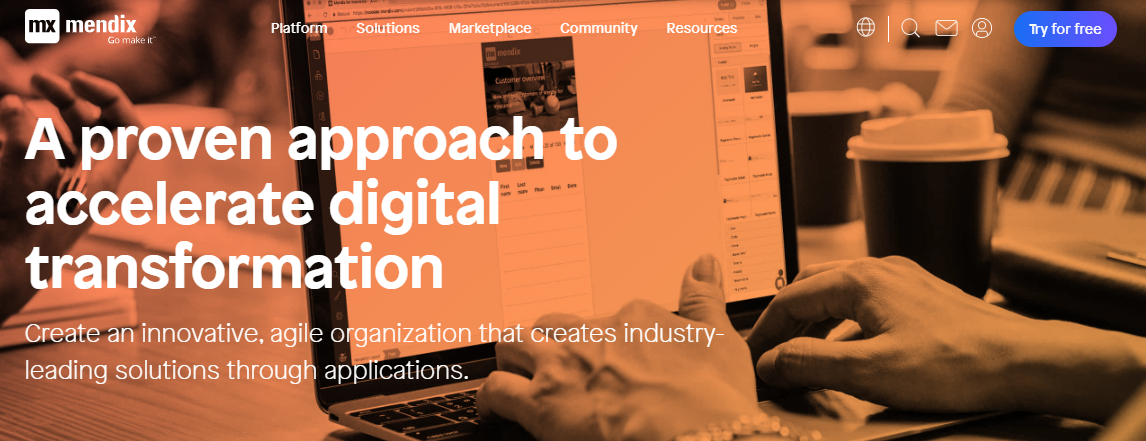
Mendix delivers industry-leading solutions through AI-driven applications. Its developer portal and API enable quick integrations with agile platforms, providing complete control and ease of deployment.
The core element of the Mendix digital transformation platform is low-code automation that digitizes several manual tasks including application requests, audits, verifications, submissions, and follow-ups. The combination of RPA, custom apps, and COTS solutions in the model eliminates workflow roadblocks such as:
- Burnout in development teams.
- Integration of complex programming languages.
- Keeping up with dynamic changes in business processes.
Thus, the Mendix digital transformation platform can maximize the value proposition by reducing operating costs, increasing productivity, and accelerating deployment.
Additionally, the solution increases collaborations among developers and other chapter employees, allowing them to interact through the same visual interface.
The Hackett Group
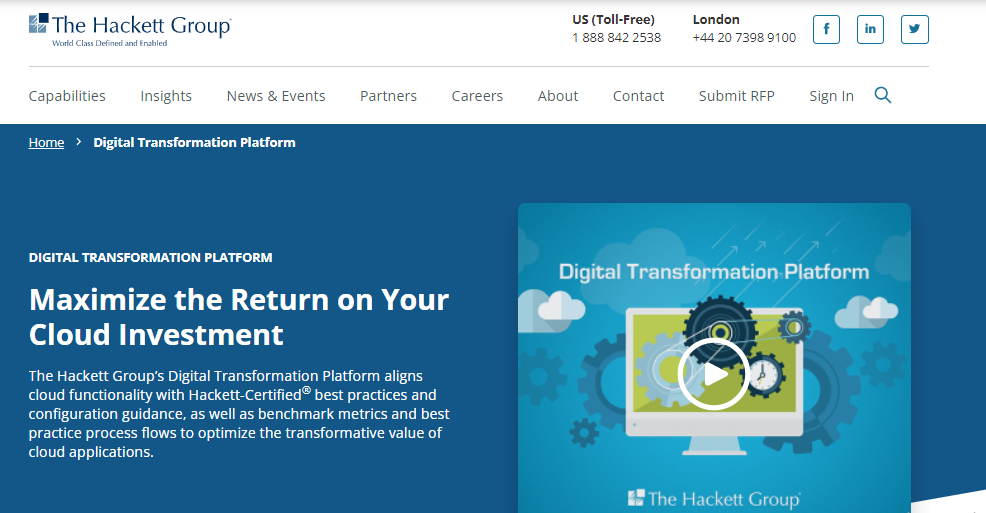
Hackett Group Digitalization Platform consists of over 100 digital tools that together form a unified roadmap to accelerate digital transformation.
This Saas solution consists of a 3-step module that identifies performance gaps and provides insights to reduce delays and improve efficiency.
The first step, Asses analyzes the current state performance and compares it against Hackett benchmark metrics and other competitors. The second stage, Transform focuses on best practices and builds a plan to drive performance improvements and organizational transformation. Finally, the third step, Implement, focuses on the best outcomes to accelerate execution.
Two highlights of the platform that help chapters advance are robotic process automation (RPA) and a digitized Smart Automation Accelerator. The Smart Automation Accelerator identifies low-value automation opportunities for elimination and to be improved via automation, while the RPA integrates automation to yield the best results.
WSO2
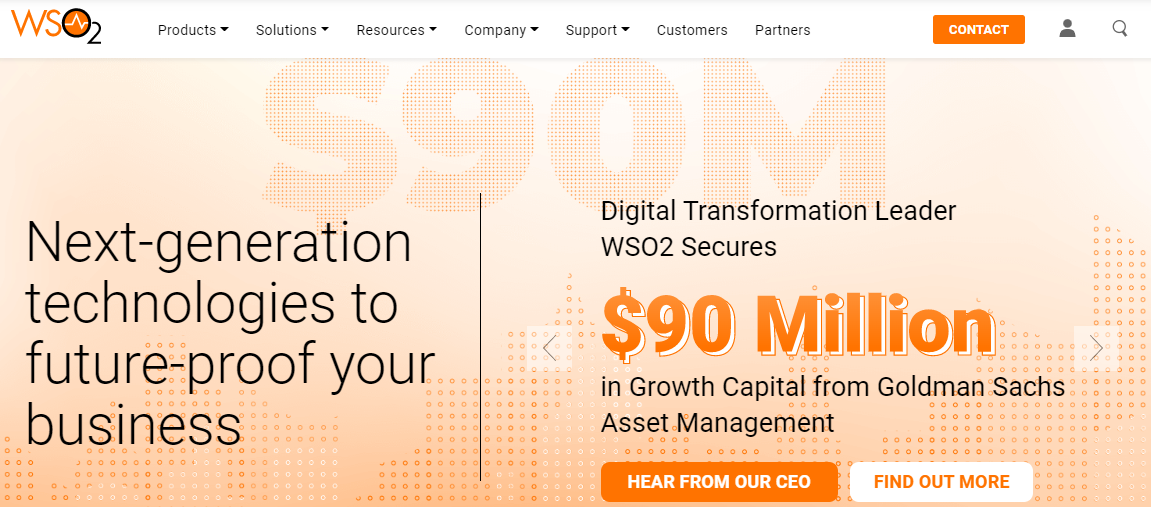
WSO2 is a hybrid integration platform with the fastest integration runtimes. It helps chapter leaders achieve digital transformation through next-generation technologies such as API-led integrations, stream processing, and Customer Identity and Access Management (CIAM) solutions.
WSO2 also features an integration runtime engine that can perform roles as an Enterprise Service Bus as well as a microservices integrator. It handles message transmission, translation, service administration, and API hosting needs. The platform also acts as a conduit between various categories, including finances, CRM, ERP, social sites, and legacy databases.
The best part of this cloud-native platform is that it supports deployment in various setups including on-premises, hybrid, and multi-cloud and allows chapters to become truly flexible.
Liferay
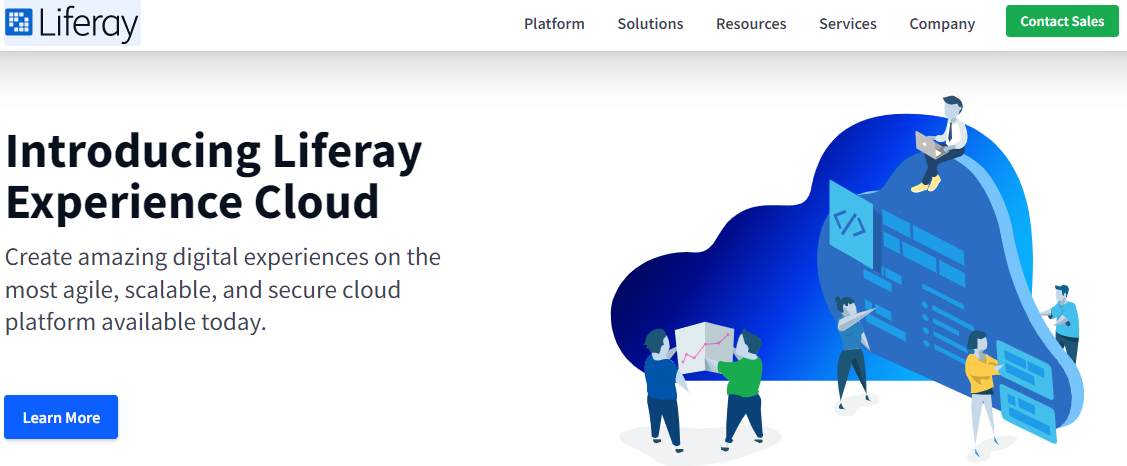
Liferay is another digital experience platform that creates a personalized web experience for each user. It helps both B2B and B2C businesses acquire customers by making their content discoverable through smart recommendations.
These personalized suggestions are generated by studying prospects' data like past searches, signups, and purchases. Customers can select the right products after comparing the three-dimensional diagram, product details, discounts, and reviews included in the custom digital catalog.
Liferay can be a robust platform for multi-chapter organizations, since it keeps every branch productive, independent, and connected with its employee portal. It also facilitates sharing of information, data, and chapter benchmarks across all the organizational branches.
It also has an online learning platform for employees with onboarding tutorials, question-answer forums, and online chat options. Lastly, the portal has an integrated analytics feature that determines the areas of improvement in each chapter based on their performance metrics.
Overall, the platform decreases IT support costs by automating several tasks and integrating multiple chapters. It also helps audiences in making informed decisions by providing them with the best resources.
BPM-D
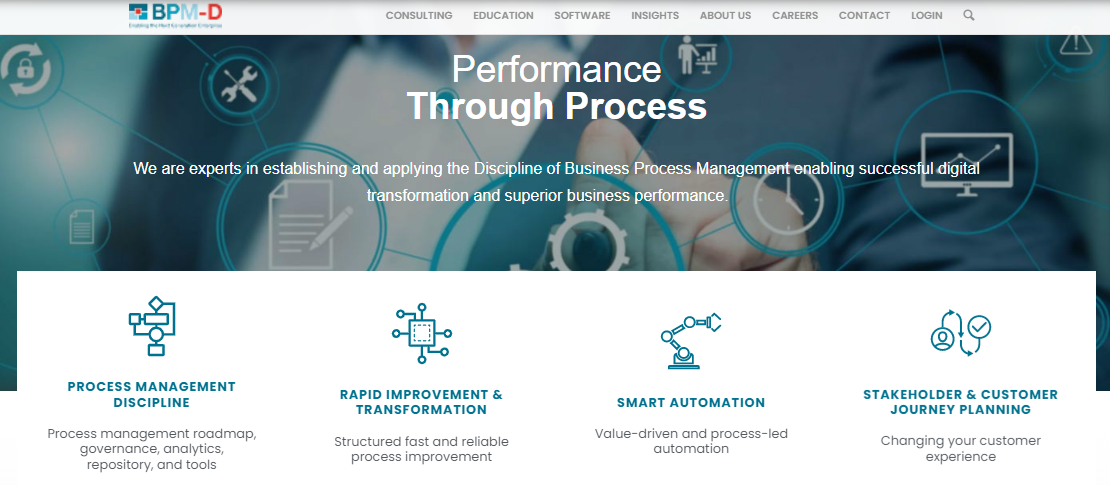
BPM-D is a cloud-based solution that helps chapter leaders align digital transformation strategies with their business goals. The tool prioritizes high-performing tasks that will drive successful results in alignment with the organizational missions.
It does this by simplifying program administration and incorporating transparency and rigor throughout all chapters. All in all, BPM-D incorporates digital transformation by:
- Aligning business and IT teams.
- Executing business strategies effectively.
- Standardizing workflow and portfolio management.
It forms and manages a practical business case for the digital transformation plan to make sure they are aligned with the organization's overall business strategy and operational capability. As it also runs on the cloud, it does not require a complicated setup process.
In addition to being a software, BPM-D also digital transformation consulting for the organizations looking forward to incorporating digitalization into their practices.
KPI Digital
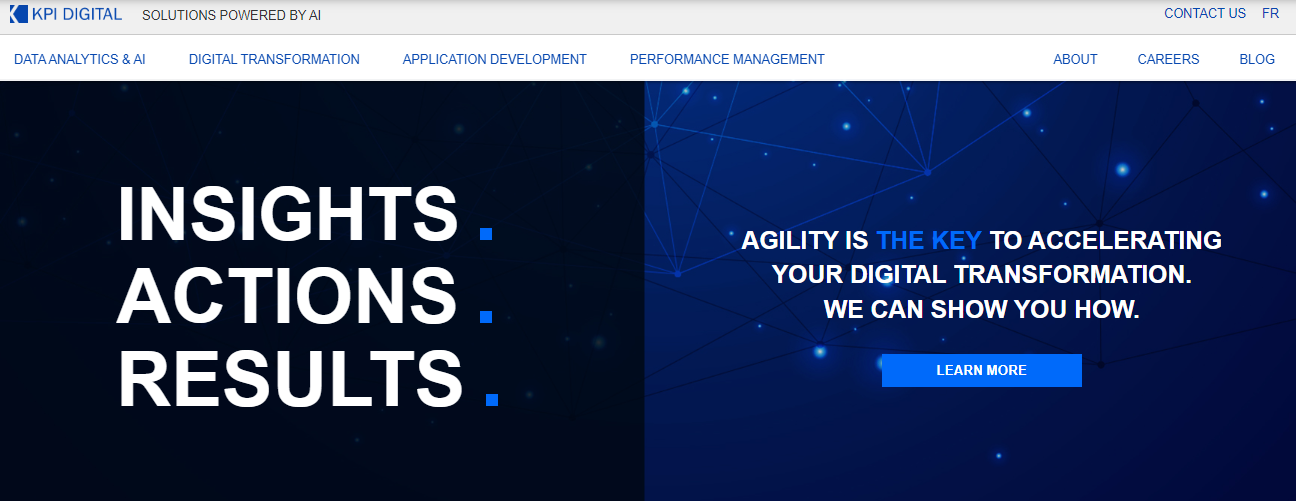
KPI Digital offers a comprehensive roadmap for digital transformation powered by smart AI solutions.
It collects data across different platforms and provides valuable insights to attract more customers, improve engagement and provide them with a seamless user experience. It does this by offering a 360-degree solution that involves automating campaigns, conducting performance analytics, and providing AI-powered suggestions and strategies.
As a platform, KPI Digital can be a powerful tool for associations as it enables them to develop data-driven strategies to achieve high-quality results for their clients while staying on top of the competition.
It also features an app development module that facilitates successful projects with low/no-code software. This AI-driven platform assists chapter leaders to transform their innovative ideas into successful SaaS business models.
Additionally, they offer custom enterprise software, web portals, and chatbots to help you improve your business efficiencies.
FAQs
What Are the Four Main Areas of Digital Transformation?
The four main areas of the business digital transformation include:
- Process: Data analytics and APIs
- Business model: Business infrastructure and core models
- Domain: Business domains and web addresses.
- Organization culture: Upskilling and training employees, experimentation and innovation.
To ensure digitalization, your team will need coordinated efforts across departments led by CEOs and CIOs.
What Are the Main Types of Digital Platforms?
A digital platform differs from a digital transformation platform. To keep it simple, it can be defined as an ecosystem developed through programming. It can be software, a cloud technology, or an associated application programming interface, depending on the type of the underlying infrastructure For an easy understanding, we can divide the digital services platforms into the following five types:
- Social media - Facebook, LinkedIn, Twitter
- Education platforms - Quora, Yahoo
- Digital workplaces - Slack, Microsoft Teams
- Streaming media - Youtube, Vimeo
- Service providers- Uber, Airbnb
What Are Some Examples of Digital Transformation?
Digital transformation involves integrating technology across every aspect of a business to meet the needs of the customers and satisfy evolving marketing needs. This process involves both replacing traditional processes with digital solutions and adopting new technologies to meet changing needs in business and markets.
An excellent example of digital transformation is using virtual and augmented reality to improve event attendees' experience. Another great example is the two-click chapter management tool that enables multi-tier organizations to monitor and manage the health of all their chapters with just two clicks.



